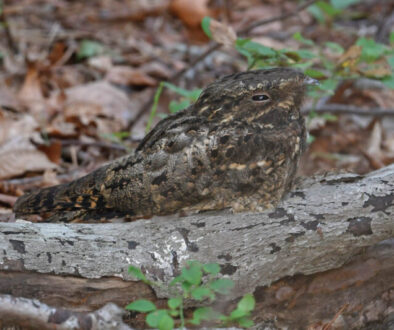It’s a Zoo Out There
Our fun and fascinating Cape May County menagerie
Photographs byMICHELLE GIORLA

If you grew up in Cape May County, you almost certainly have a story about a class field trip to the Cape May County Zoo. My own involves my mother, as room mother of my kindergarten class, deftly leading a small group of six-year-olds through a nature trail until a classmate walked headfirst into a tree. This writer is, without a doubt, not alone. In fact, a visit to the Cape May County Zoo was, and continues to be, par for the course for many area school districts.
“We don’t have exact numbers since schools can come for free whenever they want, but we have schools that visit us from all over the state,” says Dr. Alexander Ernst, veterinarian at the CMC Zoo. “Conservatively, we have hundreds of school groups that visit us annually.”
However, the zoo isn’t just for children, and while it’s fun, it’s also kind of fascinating and fairly unbelievable. Because while it has a lot to offer—and we’ll get to that—one of the most shocking facts about the Cape May County Zoo is that, situated smack in the middle of a resort area complete with sky-rocketing prices, admission to the zoo remains the same as it was when it opened in 1978: Absolutely free.
For the record, Cape May County Zoo isn’t the only free zoo in the country. Others include Salisbury Zoo in Maryland, Smithsonian’s National Zoo in D.C., and the Henry Vilas Zoo in Madison, Wisconsin, among a few others. But there aren’t many. In fact, when thinking about the adult admission price of other noteworthy zoos—$24 per person at The Philadelphia Zoo, $24.95 at the Jacksonville Zoo and Gardens, and a whopping $67 per person at the San Diego Zoo—it remains all the more stunning that our beloved and almost legendary institution, is free.
“We’re free and we’ve been free since our inception,” says Ernst. “We’re run by the Cape May County Board of Commissioners. The zoo, in its history, has had tremendous support from the county, which has always invested in us. It enhances tourism here in the county.”



While it helps the county, it also helps your wallet.
“At the end of the day, if you come to Cape May County during your vacation, you might get sick of the beach, and nowadays, taking a family to the boardwalk costs an arm and a leg,” says Ernst. “The Zoo gives guests an opportunity to burn a day or more without spending their college savings on a vacation.”
While the zoo is happy to accept donations, the bottom line is that you can spend a day—or a week—at the Cape May County Zoo without breaking the bank. And for those of you wondering, how good could it possibly be if it’s free? The answer is an unequivocal “very good.”
It’s not some tiny petting zoo—though it has a petting zoo, complete with the beloved and famous Holstein Cow ‘Jilly’ who has her own fan base. Nor is it a spectacle-grabbing operation a la Joe Exotic, with questionable practices and an even more questionable owner. And though it started with just “an African lion, primates (spider monkeys), various barnyard animals and New Jersey wildlife animals,” according to the zoo website, it’s hardly a rinky-dink operation today.
In fact, the Cape May County Zoo is now home to more than 550 animals representing 250 species in 85 acres of exhibits, with creatures from every continent except Antarctica. On top of that, it was designated 5th best zoo in the country in Trip Advisor’s 2015 Top 5 Travelers’ Choice Zoo. Not too shabby.
How do animals get to the Cape May County Zoo?
“There might be misconceptions about where the animals are coming from. Zoos are no longer out there netting zebras or lions and bringing them into a zoo. Most of our animals here at the zoo have all been born here or at other zoos,” says Ernst.

However, of the 250 species represented at the Cape May County Zoo, a number have a history that includes ownership gone awry. Sure, there are the Chilean Flamingos, acquired in 2007, which were previously residents of Michael Jackson’s Neverland Ranch. But there are other animals, with less famous previous owners, who have also found their way to the Cape May County Zoo.
“Our bobcat was a confiscation that someone had as a pet years ago. Same thing with one of our ringtail lemurs,” says Ernst. “Some of these animals are legal to have as pets in other states. The ring-tailed lemur was acquired in Florida. And there, that’s legal. But then in New Jersey, it’s illegal. So that particular animal was confiscated by the state and sent to live its life here under our care.”
It’s a common theme at the zoo. Animals, whether due to accident, injury, or illegal ownership, often end up living out their remaining days at the zoo. And while Ernst occasionally hears guests lamenting that certain animals or birds should be freed to live in the wild, that’s not always possible.
“I try to explain to people that our birds of prey are rehabilitated animals that were never able to be rehabilitated enough to be released into the wild. So, they are called non-releasable animals,” says Ernst. “They aren’t healthy enough or recovered enough from whatever their injuries were, or they are too young to go back to the wild.”
While the zoo is happy to accept donations, the bottom line is that you can spend a day—or a week—at the Cape May County Zoo without breaking the bank.
Rather than facing euthanization, when there’s room, someplace like the zoo takes them in, making their care and well-being a top priority. “Most of our animals are extraordinarily spoiled,” says Ernst. “They have the best care possible and constant attention from our keepers and veterinarians. Everybody is very, very spoiled.”
This very special treatment has resulted in some particularly long-living animals. In fact, the country’s oldest red panda is a resident of Cape May County Zoo, where she’s been living since 2011. The longevity of the animals is a testament to the tremendous care they receive in Cape May County.
“Luna is going to be 21 years old in June. That is extraordinary for a red panda. But she didn’t get that old by chance,” says Ernst. “She was almost 11 when she got here, already a little bit aged, and she has been cared for and coddled while here in Cape May. Just like a geriatric person, she has a lot of needs that must be met every day. She’s high maintenance. She can be finicky about her food, and she’s on lots of medication. We spend a lot of time with her, making sure her golden years are spent as happily as possible.”
There are other animals that have been at the zoo for a long time. The Aldabra tortoises, which arrived in 1991, are well over 30 years old. With a lifespan of over a hundred years in captivity, Ernst says that they’ll be there after his career is over.


Part of that care includes food, and lots of it. In fact, there is a person at the zoo whose sole job is dedicated to the commissary. “Food acquisition is extraordinarily complex. We have frogs the size of your thumb and over 2000-pound giraffes and everything in between. We are feeding, quite literally, the world’s animals,” says Ernst.
It should come as no surprise that there’s an equally large assortment of food, and food requirements. The zoo orders from numerous vendors dealing with highly specialized provisions from around the country, from raw meats in Colorado to produce from Tony’s Produce in the Villas.
“We’re not using leftover scraps. We’re getting produce from Tony’s and it’s the same stuff that’s going to restaurants. Our animals are eating the highest quality food,” says Ernst.
As for how much food is consumed per year, that’s a tough question. “It’s almost impossible to figure out the poundage. For instance, lions are carnivores. They get a raw meat diet that’s balanced and fortified. A male lion might get ten pounds of that a day, same as a female. Cheetahs might be three or four pounds per day. The leopards might get the same. So just in a meat diet alone, we might be going through 40 or 50 pounds a day. And that’s just meat. Then you’ve got the hoof stock animals eating hay. And grain diets. It’s an incredibly complex undertaking to make sure we’re stocked.”
The aviary alone is more complex than any human household.
“I would say that here at the zoo, as a group, the birds—the World of Birds Aviary—are probably the most demanding. There are dozens of different species, all of which eat different types of food, and they all live collectively in that area,” says Ernst. “The aviary staffing is constantly putting out quite literally dozens of different types of food for all the different birds in there…and birds can be quite picky. So, there’s fresh fruits and fresh produce and feed and commercial diet and nuts.”
In addition to providing animals with shelter, care and healthy diets, the zoo works with animals on a formal training program to help care for them better.
“One of the most common things we do is try to train our animals to help us do common and noninvasive vet procedures on them,” says Ernst. “It can be nearly impossible to do physical exams or listen to a heartbeat with a stethoscope or take blood on some of these animals. As things have evolved, most of our animals that are interested in doing so are being trained, with the end goal being that whatever behavior we are training them to do will help us care for them in some way.”
Whereas in the past, it was very common to dart an animal with anesthesia to provide vet procedures, at the zoo, there are animals who have been trained to come up close to have a physical examination done. Even more astonishing, some have been trained to take injections, something human parents often can’t manage with their own offspring. But don’t feel bad…not all the animals are trained.
“Animals are individuals just like human beings, and even individuals of the same species can be very different. Some animals are very eager and excited to do the training,” says Ernst. “There are others that don’t care. Being trained to take the injections is very positively reinforced. It’s a really cool aspect.”
Though the training program has resulted in less need for anesthetics, there are times when it’s necessary. “If I wanted to get x-rays on the lion, the lion would have to be anesthetized,” says Ernst. “We want to make sure when we do big procedures on animals, we’re not doing it flippantly. We’re very particular and deliberate in how we practice medicine here that we don’t put them under any undue stress.”
A long, quality life is a high priority for the animals of Cape May County Zoo, but it’s not the only goal of the zoo—conservation is also of utmost importance.


The Cape May County Zoo is part of the Association of Zoos & Aquariums (AZA) Species Survival Program, whose mission is to “manage an ex-situ (off-site) species population with the interest and cooperation of AZA-accredited zoos and aquariums,” according to its website.
Not only does an AZA accreditation mean that a zoo meets a particularly high standard of animal care and welfare, but for the Cape May County Zoo, it also means being part of the Species Survival Plan® (SSP) Program. According to CMC Zoo literature, the SSP “began in 1981 by the AZA as a cooperative population management and conservation program for selected species and zoos and aquariums. Each SSP manages the breeding of a species to maintain a healthy and self-sustaining population.”
So, when there’s an animal that’s being threatened in the wild, participating zoos can work together, using a database, to help prevent extinction.
“We know where most of the animals come from. They can be matched up genetically and assigned to breeding pairs. So, the breeding we do here, we’re not just breeding to get people to see baby animals,” says Ernst. “It’s deliberate. It’s designed to keep a genetically strong population of animals in captivity, almost like an insurance policy against extinction. For example, snow leopards are endangered. If they get close enough to extinction, due to the efforts of SSP, there is a genetically diverse enough population in zoos to start a repatriation program.”
There are plenty of animals at the Cape May County Zoo that are part of the AZA Program, including, but not limited to, Cotton-Top Tamarins, American bison, and antelope.
“It’s very rewarding,” says Ernst, who has been part of sending and receiving animals to and from other AZA zoos as part of the program. “While our animals can never return to the wild, their genetics might. They might be part of a small but critical contribution.”


One of the fun things about the AZA program, as far as zoo visitors are concerned, is seeing the babies. Because let’s face it, there is nothing cuter than a baby, regardless of species. And there have been plenty of babies born at the Cape May County Zoo. From ring-tailed lemurs and cotton-topped tamarins, to zebras, snow leopards, giraffes, bison, and capybaras, animals of all sorts have been bred right at the zoo. In addition to visiting them, guests are often invited to help name the newborns. “We often have naming contests so the public can be involved,” says Ernst.
The public can be involved in other ways as well, including the zoo’s animal encounters, where, for a fee, guests can take part in an approximately 20-minute visit with a particular animal. Animals currently booking encounters are the capybara family, giraffes, camels, and winter reptiles. Encounters are private, and are led by zoo educators, and most come with the opportunity to feed the animals.
There are enough animals to see at the Cape May County Zoo to keep you busy all day, but really, it’s just the tip of the iceberg.
The Zoo is situated inside Cape May County Park Central, which includes picnic areas, walking parks, multiple playgrounds, fitness course, fishing ponds, picnic pavilions, and disc golf course. Additionally, the park has installed a wildlife themed carousel, new rock-climbing wall, a small train, and Tree to Tree, an aerial obstacle course. And though there are fees for these features, they certainly add to the thrills to be found at the park. It’s no surprise that the zoo is often packed full of families, couples, grandparents, and children, all on adventures, all exploring everything the park and zoo have to offer.
“Our attendance is very high. The benefit is that people see the zoo, they learn something, then they drop in a donation. Not only do we get more attendance because of the zoo being free, but we’re able to reach people that we may not have otherwise reached with our messaging,” says Ernst. “One of the biggest benefits of going to the zoo is to educate yourself about these animals, to connect, and to understand that saving and conserving them is important.” ■



